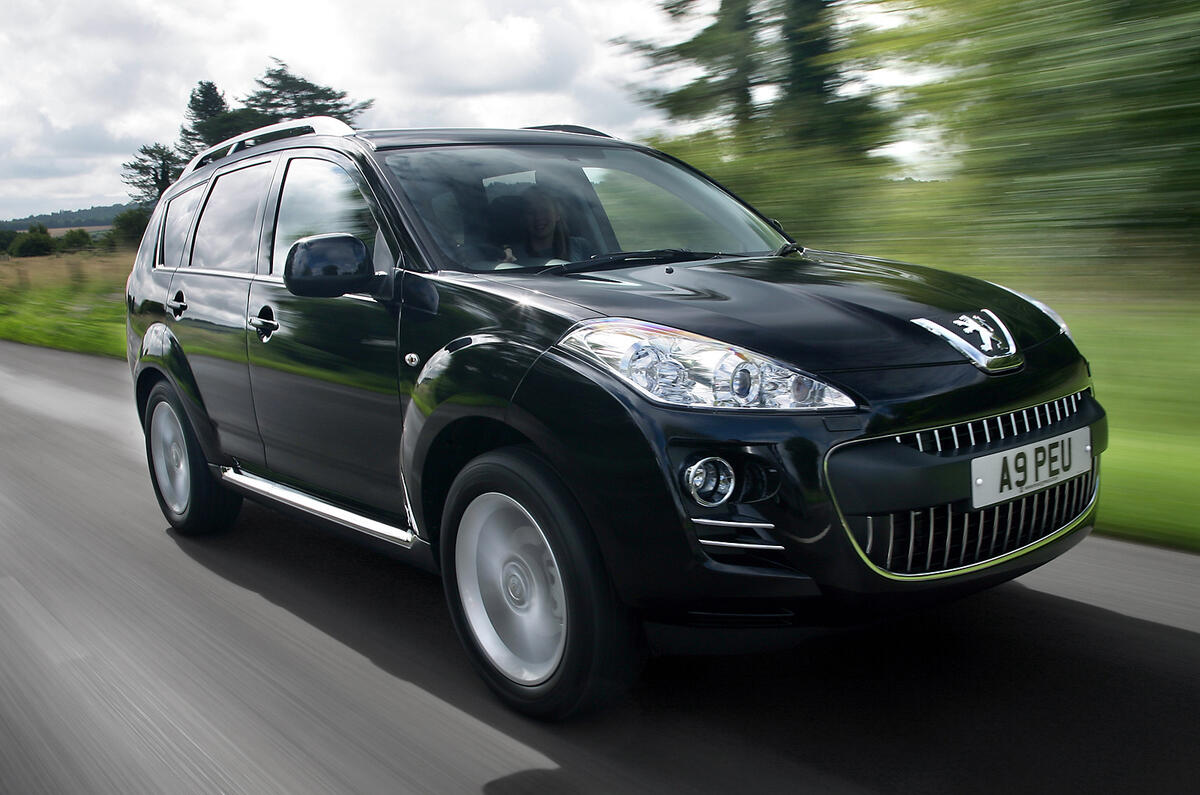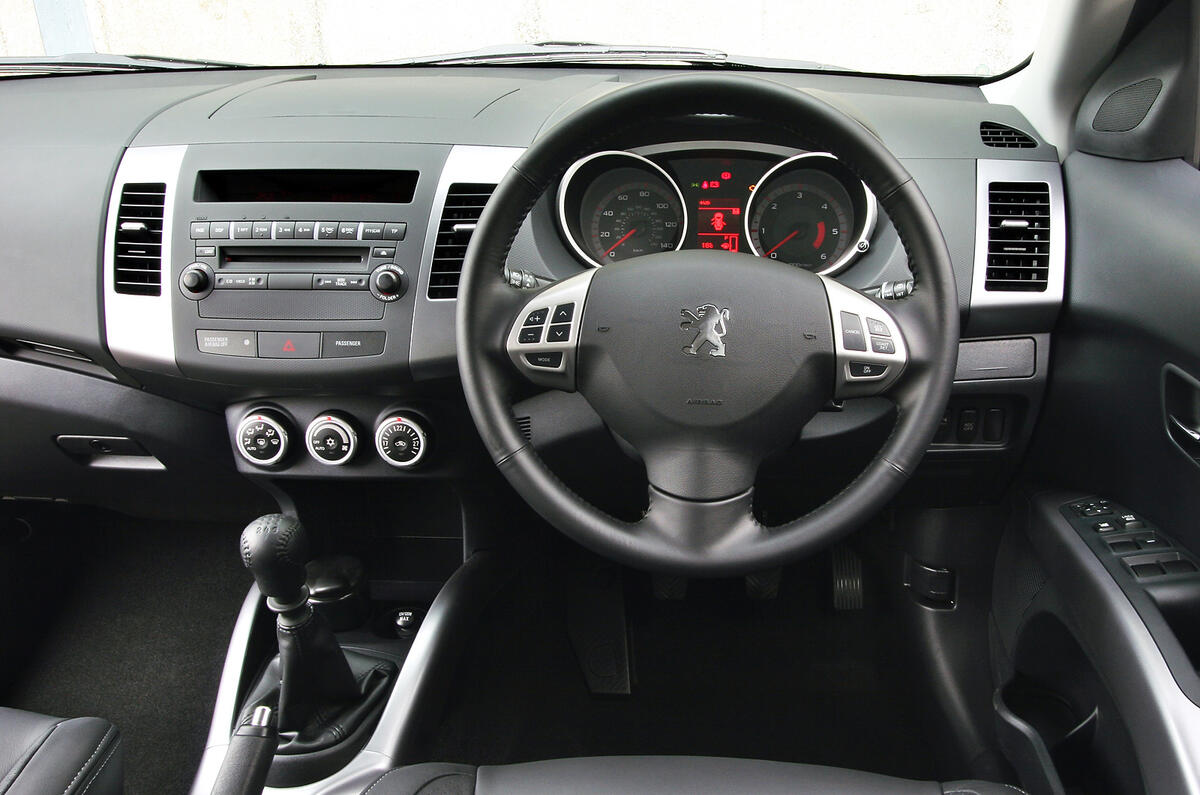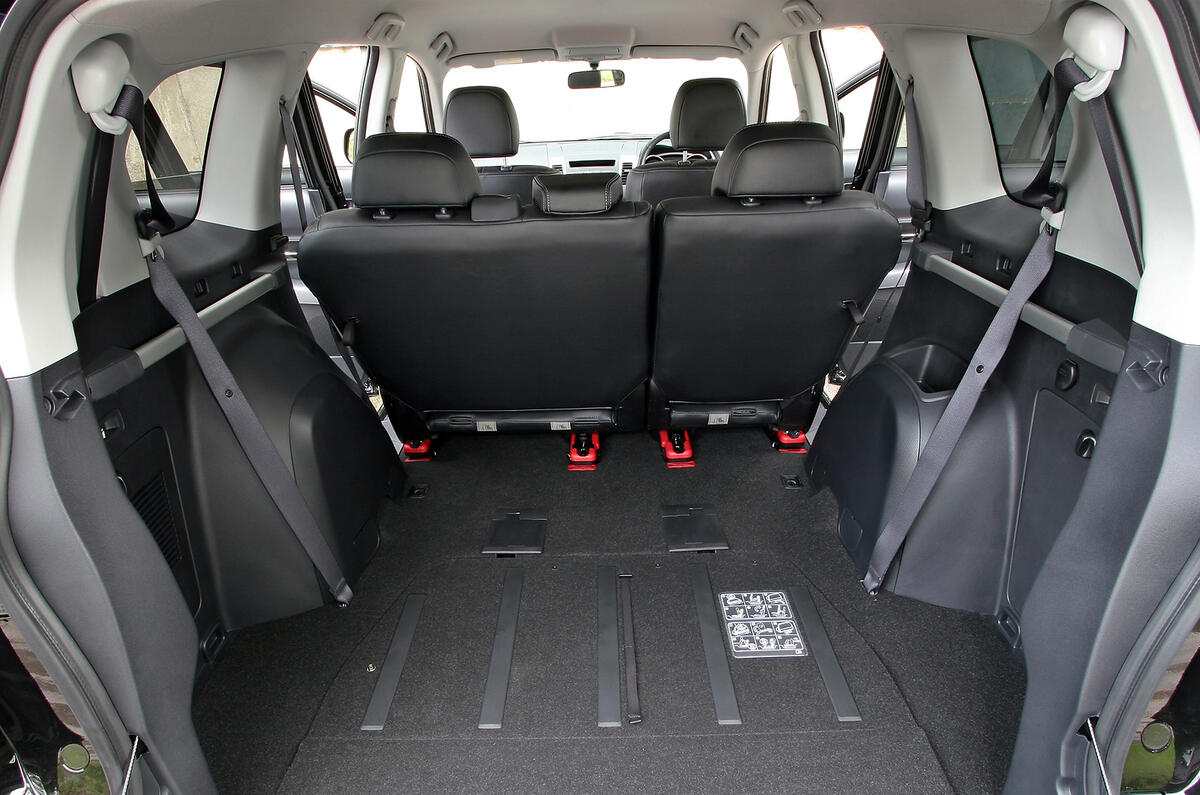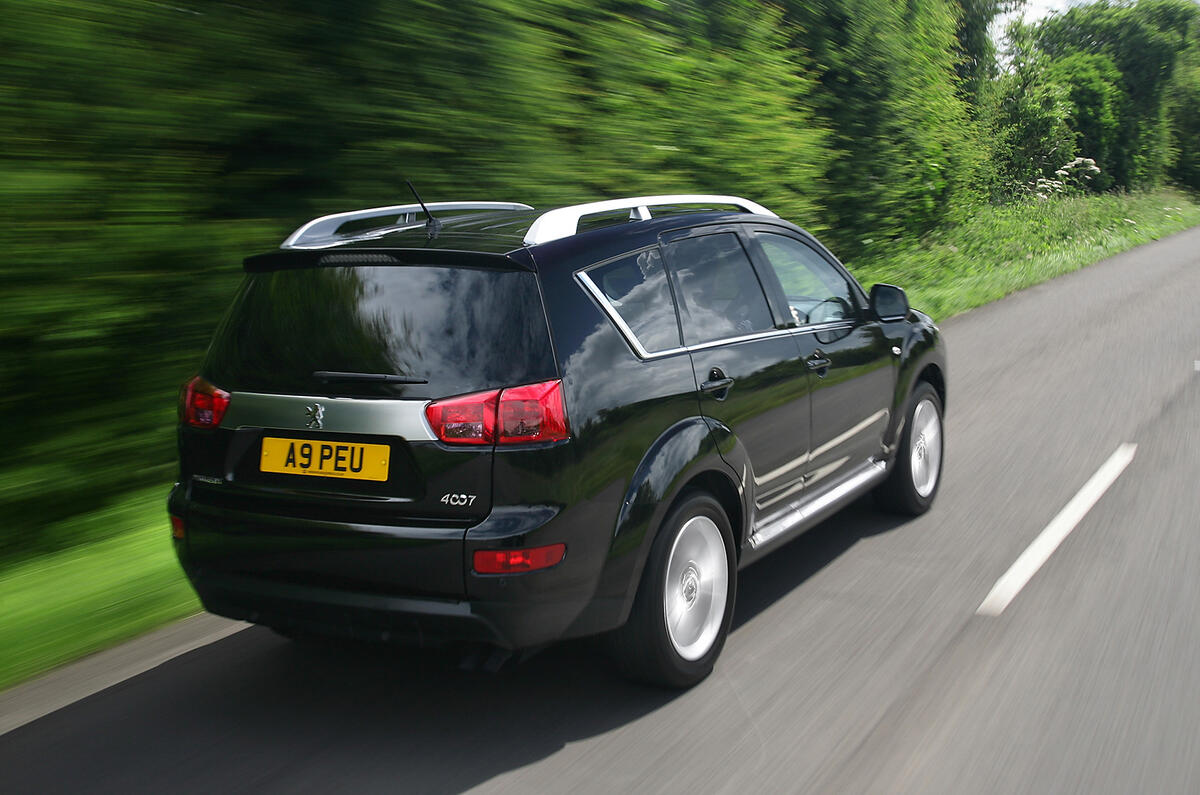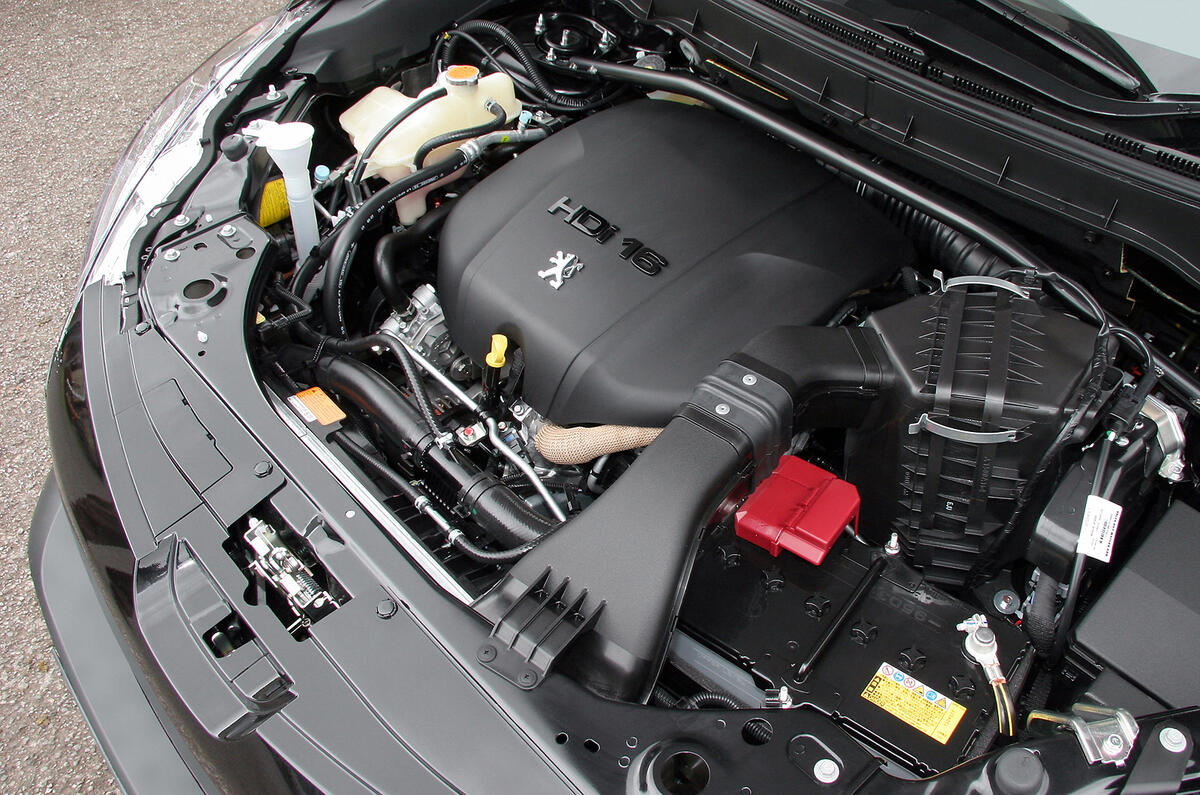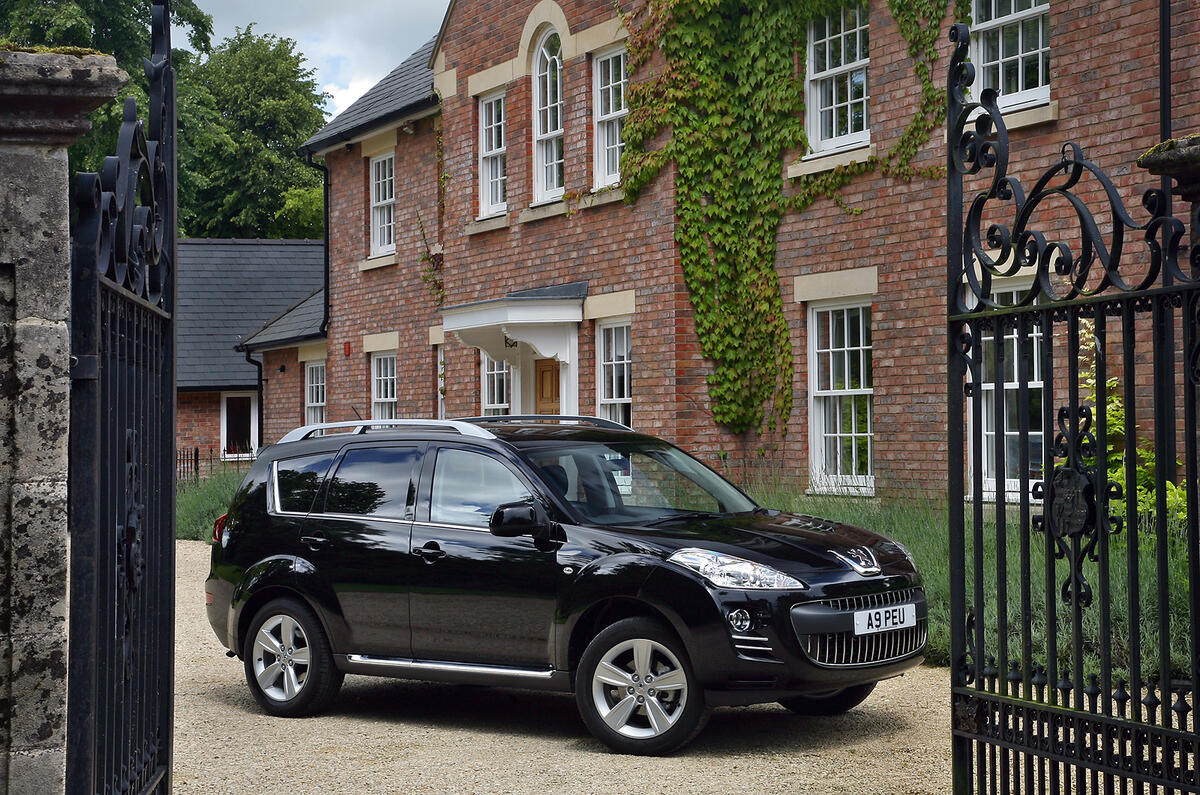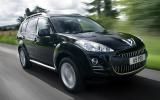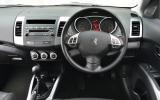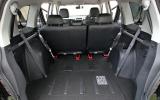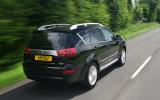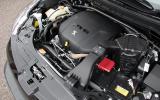The Peugeot 4007 is the car maker’s first attempt at producing a crossover SUV, and the final model to come from PSA's joint venture with Mitsubishi. It is virtually identical to the Mitsubishi Outlander and Citroën C-Crosser, so it will come as no surprise to know this quasi-off-road litter is rather similar to the others.
Only one engine option is available – the same 2.2 HDi unit that also features in the C-Crosser. The four-cylinder diesel engine produces 156bhp at 4000rpm and 285lb ft of torque at 2000rpm, and is mated to a six-speed manual or automatic box. Claimed combined economy is 40.4mpg for the manual and 38.7mpg for the auto, with CO2 emissions rated at 185 and 189g/km respectively. All versions come with four-wheel drive.
Trim levels are as simple to grasp as the engine and gearbox options. The base SE model makes most sense if you can live without leather and 18-inch alloys, yet it still offers luxuries such as cruise and climate control. Higher-spec GT trim comes with the leather and those larger-diameter wheels, plus rear parking sensors and Bluetooth connectivity as standard. Whichever trim level you choose, your 4007 will come with seating for seven.
Get past the slightly startled-looking wide-mouth grille and garish chrome trimming and roof bars and the 4007 really isn’t that bad. Better, in fact than the more expensive Outlander. Peugeot’s 2.2-litre HDi unit is both more refined and more powerful than Mitsubishi’s VW-sourced 2.0-litre diesel, and is also a reasonable justification for the 4007's higher price.


